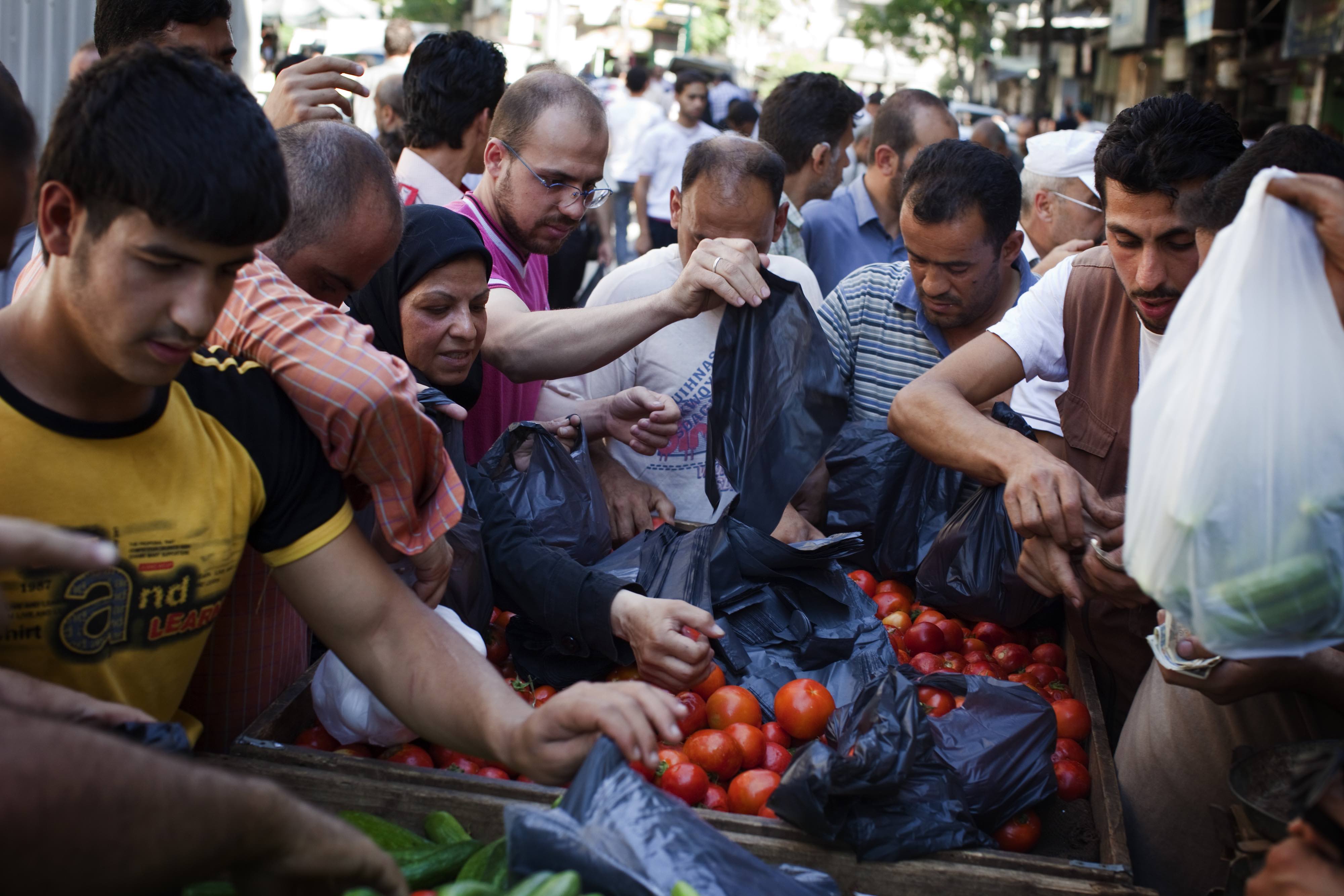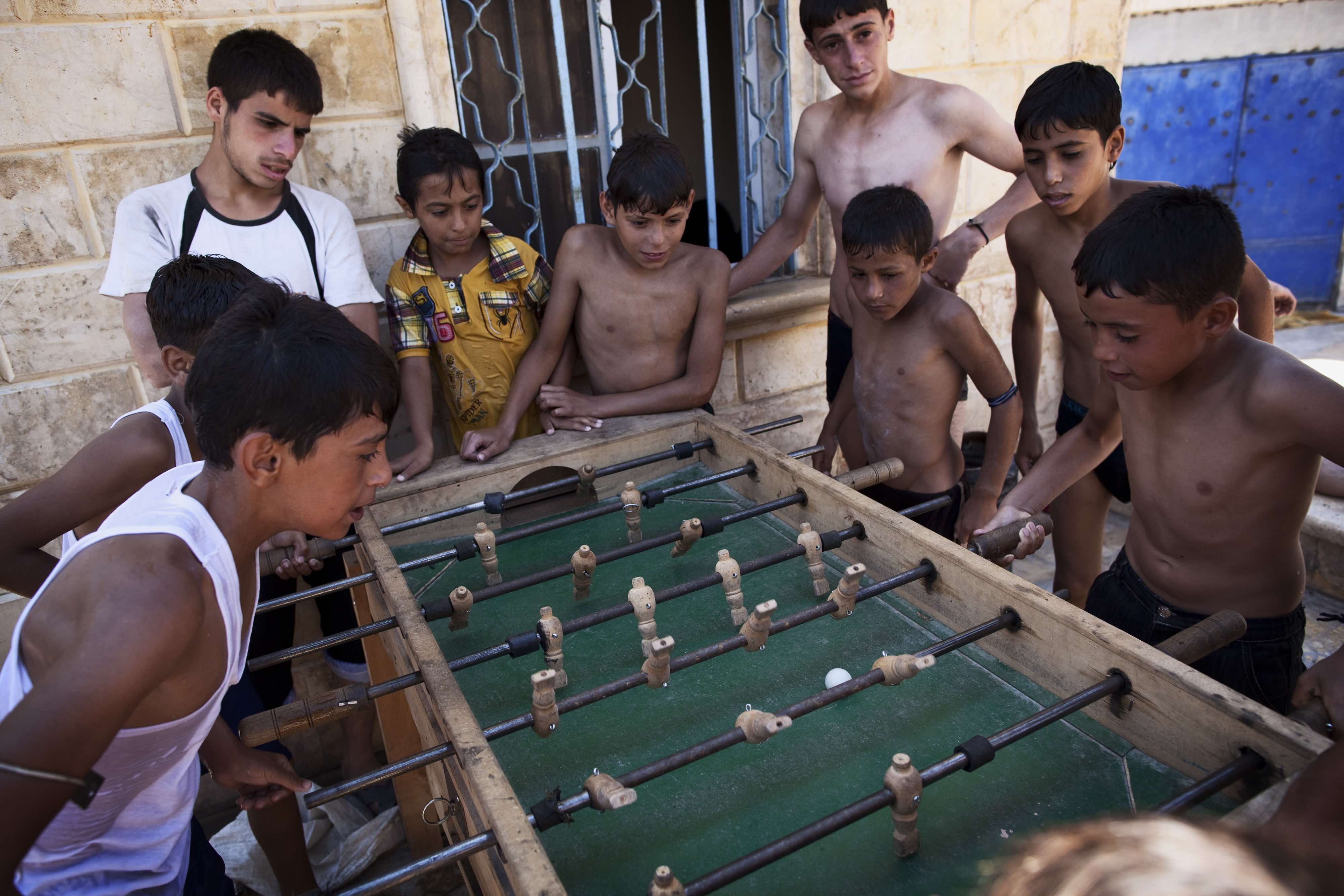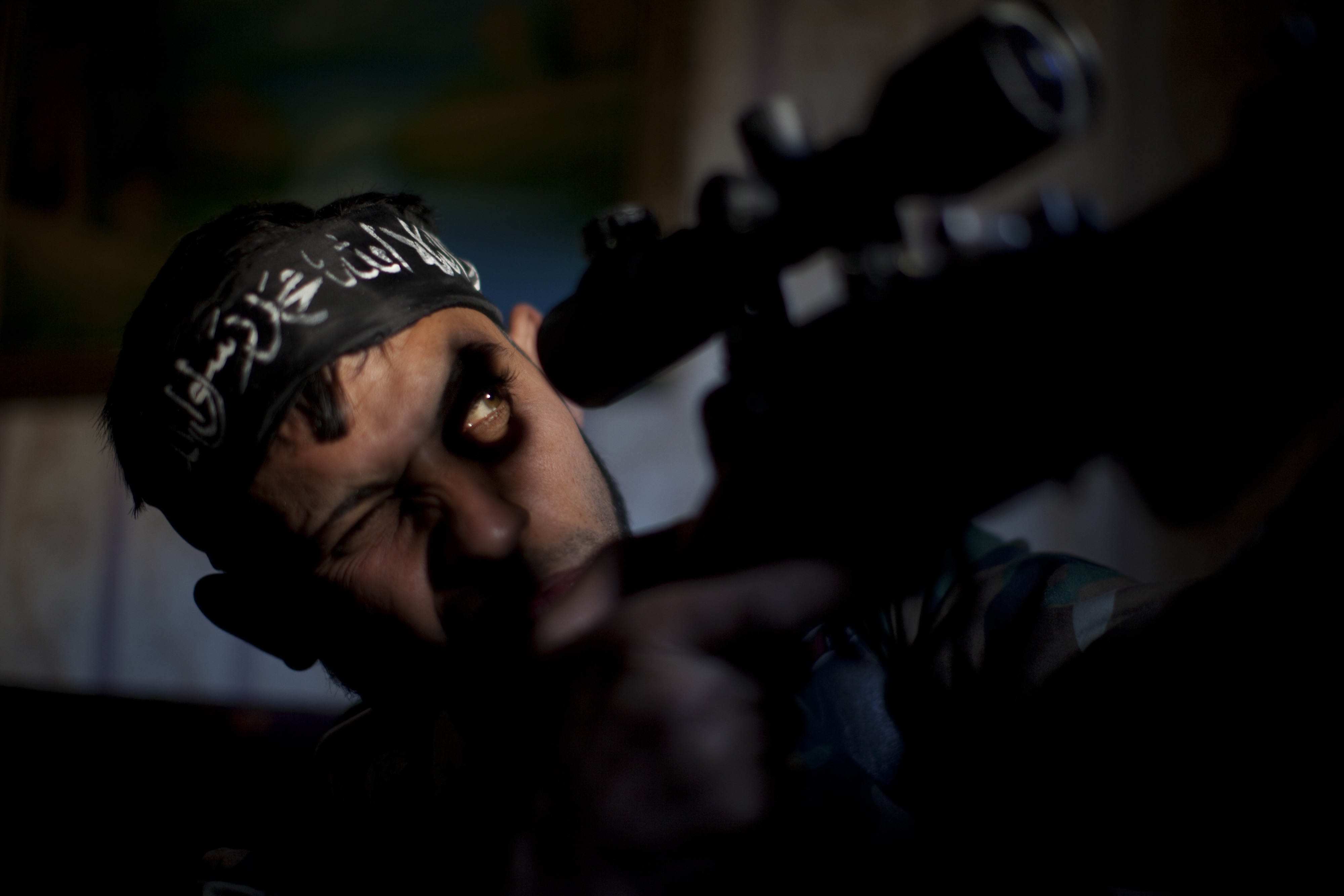People often ask me how I prepare to cover a war. Physically, I try to stay in shape, because I know I’ll be running with heavy equipment, a bullet-proof vest and a helmet. Being able to move quickly might save my life. When I pack my bags, I keep things pretty spartan. Aside from all the photography equipment, I always take a sleeping bag, a flashlight, a knife – and of course, ear plugs. The pragmatic preparations are pretty cut and dry, but mentally and emotionally there is no preparation. Even with experiences in war zones, certain scenes always leave a lasting impression.

When I first went to Syria, we were welcomed by the guerillas because they wanted us to show the rest of the world what the government was doing. Over time, it’s become harder to gain access because some people have seen that the presence of journalists hasn’t helped their situation. In general, I’ve found Syrians incredibly hospitable, and that goes for the guerrillas too. It’s easy to forget that before the war, many of them were bakers, teachers or shop owners who simply felt compelled to take up arms. Because they weren’t professional soldiers, I think they felt a certain kinship with guys like me, a kinship that was strengthened because we shared food and shelter.


I believe the only way to tell the story of a war is through the personal histories of the people who suffer through it, because it’s easy to forget that wars are fought and experienced by people like you and me. A good example was a man named Ibrahim Qashush, a forty-two-year-old firefighter, husband and father of three. During the demonstrations that started the revolution he wrote a couple of anti-government songs. Not long after, they found his body floating in the Orontes river with the vocal chords torn out of his throat. The government of Bashar al-Assad thought they could literally silence the revolution, but it had the opposite effect. Now, every Friday after prayers, two boys named Abderraman and Asma lead the protests.


Getting the human stories is often complicated by the conditions of war. The longer the conflict goes on, the more dangerous it has become for foreign observers. When guerrilla groups from Al Qaeda got involved the threat of kidnapping shot up, so now we can’t go anywhere without a specially assigned guard detail. My nights are usually spent editing and sending photos to HQ, if the internet is working. One surprising upside is that the food is pretty good in Syria because a lot of it comes in from Turkey.


I’m often afraid when I work, but I look at fear as a defence mechanism that allows me to know how far I can go before things become too dangerous. All conflicts come with their own unique set of risks, but the most difficult thing to deal with, by far, is the pain of others. I encounter pain everywhere in Syria, the hospitals, the funerals, the refugee camps, and it never gets any easier to witness.
Despite the emotional toll, I love my job. I love that it lets me travel, get to know other cultures and act as a witness to events that influence world history. Of course, it’s very difficult, and when I’m not working I like to just spend time at home, resting, eating well, and seeing friends. I don’t find it difficult to reintegrate into ‘normal’ life, but I do find, after spending some time at home, I get an itch to go back to Syria.






JM Lopez’s work in Syria has been shortlisted in the Lifestyle category 2015 Sony World Photography Awards.
This article originally appeared in Huck 41: The Documentary Photography Special in from November 2013.
You might like

Capturing life in the shadows of Canada’s largest oil refinery
The Cloud Factory — Growing up on the fringes of Saint John, New Brunswick, the Irving Oil Refinery was ever present for photographer Chris Donovan. His new photobook explores its lingering impacts on the city’s landscape and people.
Written by: Miss Rosen

After Assad’s fall, Syria’s musicians rebuild from the rubble
Spaces Between the Beats — Following decades of dictatorship and 14 years of civil war, the country’s classical and creative scenes have an opportunity to build from scratch. Andrei Popviciu speaks to the people hoping for a flourishing new era of art and sound.
Written by: Andrei Popoviciu

Susan Meiselas captured Nicaragua’s revolution in stark, powerful detail
Nicaragua: June 1978-1979 — With a new edition of her seminal photobook, the Magnum photographer reflects on her role in shaping the resistance’s visual language, and the state of US-Nicaraguan relations nearly five decades later.
Written by: Miss Rosen

A visual trip through 100 years of New York’s LGBTQ+ spaces
Queer Happened Here — A new book from historian and writer Marc Zinaman maps scores of Manhattan’s queer venues and informal meeting places, documenting the city’s long LGBTQ+ history in the process.
Written by: Isaac Muk

Nostalgic photos of everyday life in ’70s San Francisco
A Fearless Eye — Having moved to the Bay Area in 1969, Barbara Ramos spent days wandering its streets, photographing its landscape and characters. In the process she captured a city in flux, as its burgeoning countercultural youth movement crossed with longtime residents.
Written by: Miss Rosen

In photos: 14 years of artist Love Bailey’s life and transition
Dancing on the Fault Line — Photographer Nick Haymes’s new book explores a decade-plus friendship with the Californian artist and activist, drawing intimate scenes from thousands of pictures.
Written by: Miss Rosen


